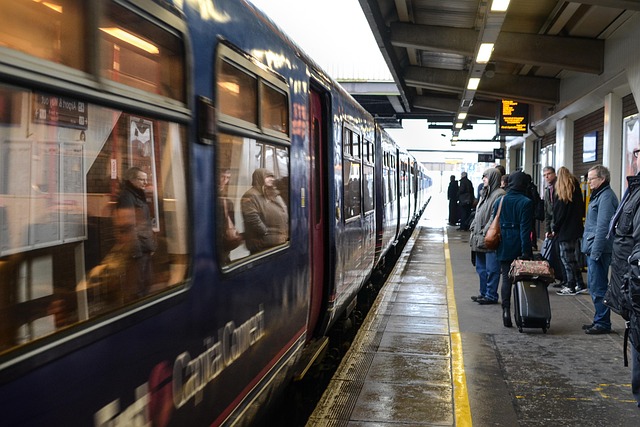Coordinating local stops to enrich cultural experiences without extending travel time
Integrating meaningful local stops into a bus tour can transform routine transfers into memorable cultural moments. With careful timing, clear boarding and luggage procedures, and attention to accessibility and safety, small detours become efficient opportunities for enrichment without adding travel time.

Integrating cultural stops into a bus tour itinerary requires deliberate planning to enhance passenger experiences while keeping overall schedules intact. By aligning routing, pitstops, and coach operations with short, purposeful visits to local services, operators can offer authentic engagement—such as quick museum highlights, community markets, or heritage viewpoints—without turning a journey into a series of delays. Success depends on tight logistical coordination, predictable transfers, and clear expectations for passengers and local partners.
How can coach routing enable cultural pitstops?
Effective routing identifies locations where a brief stop yields high cultural value without significant detour. Using route analysis and time-of-day traffic patterns, planners can select pitstops within a limited radius of the main route, minimizing extra miles and fuel use. Coach routing that leverages one-way streets, designated pull-ins, or timed traffic signals can preserve schedule integrity. When routing choices are combined with pre-arranged short programs—such as guided 20–30 minute walks or quick demo sessions—passengers gain context and connection without prolonged interruptions.
How do itineraries and scheduling balance time?
Well-crafted itineraries allocate precise time windows for boarding, transfers, and local visits, with built-in buffers for minor delays. Scheduling should factor in realistic dwell times for passenger movement and unexpected traffic while reserving fixed blocks for cultural engagement. Publishing clear itineraries to passengers in advance helps set expectations and speeds boarding. Coordination between drivers, tour guides, and local hosts is essential: synchronized watches, mobile communications, and contingency plans keep the schedule tight while allowing for short, meaningful stops.
How to manage boarding, luggage, and transfers efficiently?
Smooth boarding and luggage handling reduce dwell times and make cultural stops feasible. Standardized boarding procedures—such as numbered groups or assigned rows—accelerate embarkation. Luggage protocols that include quick access bins and clear labeling reduce time spent locating items during interim stops. Transfers between coaches or to local facilities should be rehearsed and signposted, with staff directing passengers to minimize confusion. When transfers are pre-notified and baggage is managed proactively, a 20-minute cultural stop can feel seamless rather than rushed.
How does accessibility and safety shape local stops?
Accessibility considerations ensure cultural stops are inclusive and efficient. Select pitstops with accessible entrances, ramps, and short walking distances for passengers with mobility needs. Safety checks—such as verifying vehicle pull-in stability, pedestrian crossings, and first-aid readiness—are non-negotiable. Clear briefings about safety procedures before disembarking help maintain order. Prioritizing accessible sites and safe boarding zones not only serves diverse passengers but also shortens the time needed to move people on and off the coach safely.
How do tracking and logistics preserve schedule?
Real-time tracking of coaches and digital itinerary management tools allow operators to monitor progress and make informed adjustments. GPS tracking combined with traffic data enables dispatchers to reroute or delay nonessential segments to protect key cultural stops. Logistics planning should include agreements with local services on fixed-time windows and rapid-entry options. Efficient point-to-point communication among drivers, operations centers, and on-site hosts ensures that businesses are prepared for arrivals and that passengers proceed in a coordinated manner, preserving the master schedule.
How are maintenance, passengers, and routing coordinated?
Regular coach maintenance and predictable passenger handling practices reduce unexpected delays that could jeopardize cultural stops. Pre-trip vehicle checks, scheduled refueling, and preventive maintenance planning avoid breakdowns that create lengthy disruptions. Passenger-focused measures—such as concise onboard announcements, clear signage for pitstops, and staff assistance for those with luggage or mobility needs—streamline transitions. When routing decisions incorporate likely maintenance windows and passenger flow realities, cultural engagement can be consistently delivered without extending overall travel time.
Coordinating local stops to enrich cultural experiences without extending travel time relies on an integrated approach: precise routing, disciplined scheduling, proactive luggage and boarding systems, strong accessibility and safety practices, and real-time logistics and tracking. Thoughtful partnerships with local services and advance communication with passengers make short, meaningful stops possible. By treating every minute as part of the experience rather than a delay, operators can offer culturally rich moments that fit cleanly into a journey’s timeline.





